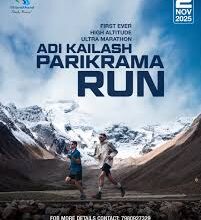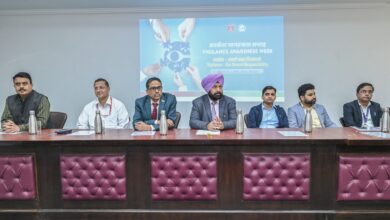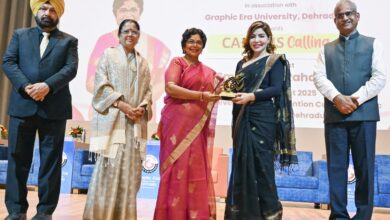Heli darshan scheme to ‘Adi Kailash’,’Om Parvat’ started successfully

Heli darshan scheme to ‘Adi Kailash’,’Om Parvat’ started
B.D. Kasniyal
Pithoragarh, April 1
A ‘Heli Darshan’ scheme, to ‘Adi Kailash’ and ‘Om Parvat’ mountains was successful on its’ maiden flight which flagged off by Pithoragarh Joint Magistrate Asish Mishra, here today.
As per the scheme, a MI-19 helicopter will take pilgrims from Naini-Saini airport to ‘Adi Kailash’ and ‘OM Parvat’ region of Vyans valley and after hovering over these religious places for 2 hours will land back at the Pithoragarh airport.
“The two hour heli- trip, costing a sum of Rs 40000 and additional GST charges, is being run by ‘Sky One Airways’ company. A total of 19 tourists flew to ‘Adi Kailash Darshan’ and after later returned to Naini-Saini airport,” said Kriti Chandra Arya, District Tourist Officer, Pithoragarh.
The experimental heli- trip is being run on the demand of religious tourists from across the country.”If the experiment becomes successful, the trip will be run for 5 days in a week from next month,” said the tourist officer.
Pithoragarh DM Reena Joshi said on the occasion that this scheme is a significant achievement for devotees of Lord Shiva from across the country and could result into bigger publicity of ‘Adi Kailash’ region.” The scheme is going to popular with the devotees of Lord Shiva in the coming days,” expected the DM.
The inaugural heli trip to hover over ‘Adi Kailash’ and ‘OM Parvat’ mountains in Vyans valley of Pithoragarh district, was successful. The pilgrims who undertook the two hour flight expressed their satisfaction after returning at Naini-Saini airport.
“The heli trip to ‘Adi Kailash’ is being managed by Rudraksh Aviation in collaboration with Kumoan Mandal Vikas Nigam (KMVN),” said Kirti Chandra Arya, District Tourist Officer.
“We had clear ‘darshan’ of ‘Adi Kailash and ‘OM Parvat’ mountains and we will inform our friends and relatives about the trip on reaching home,” said Apurva Gokhle, a pilgrim from Gujarat.
According to Arya, a total of 16 pilgrims from Gujarat, Andhra Pradesh, Oddisa and Haryana, including 9 males and 7 female pilgrims were part of the maiden flight. The next heli flight will be organised on April 3.”We are also planning to organise a 5 days and 4 nights ‘Adi Kailash’ package from April 15 to May 10, this year,” said the tourist officer.




